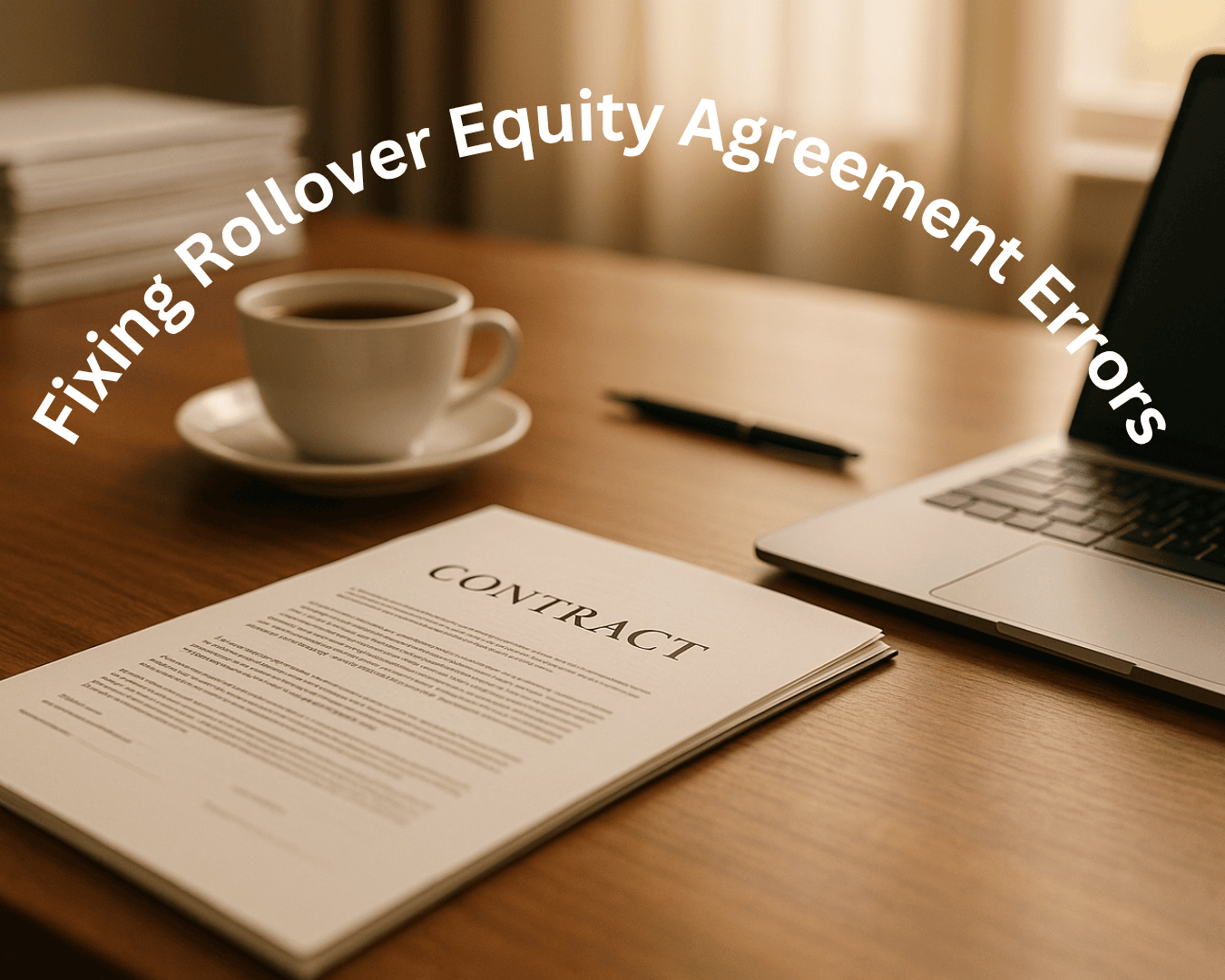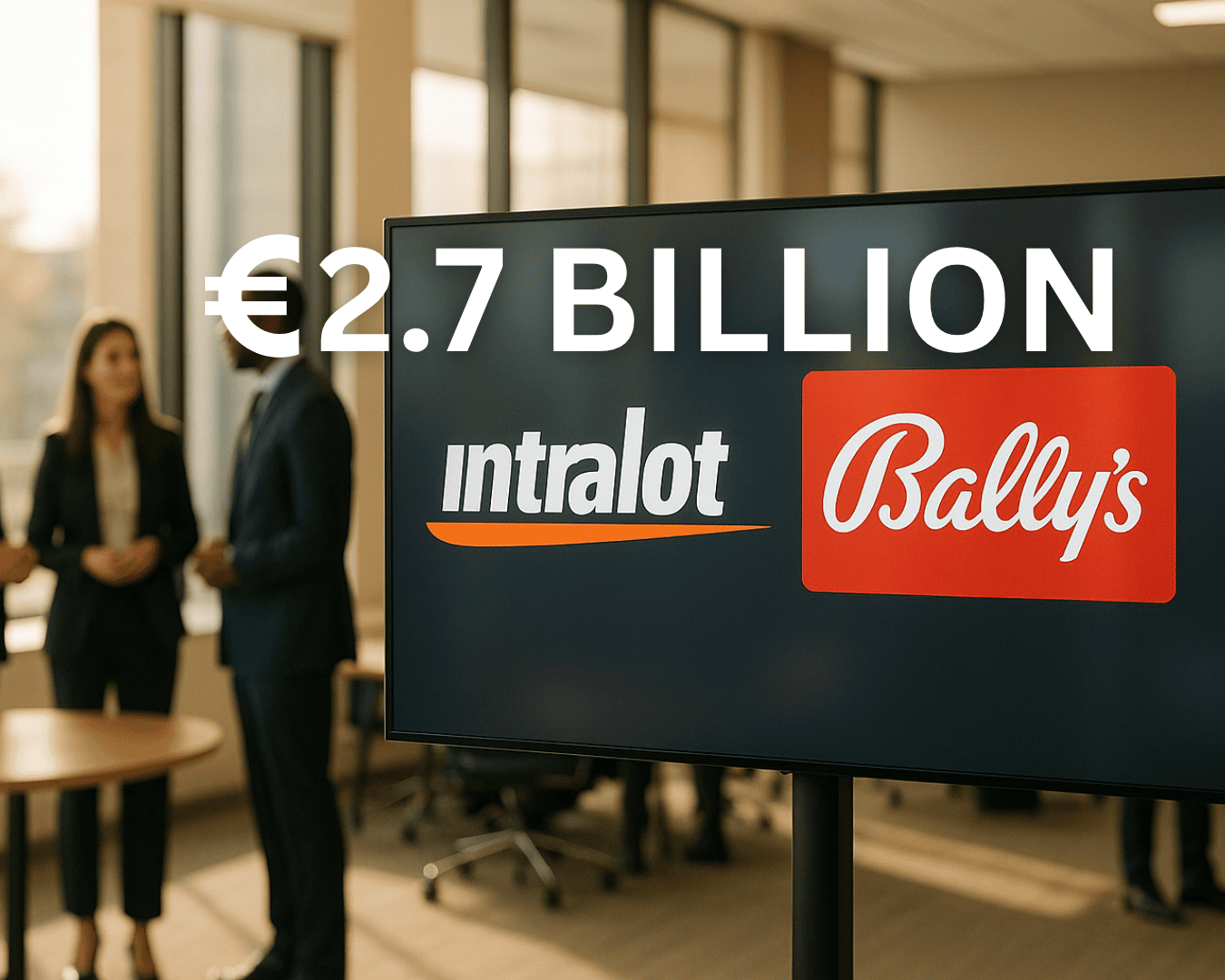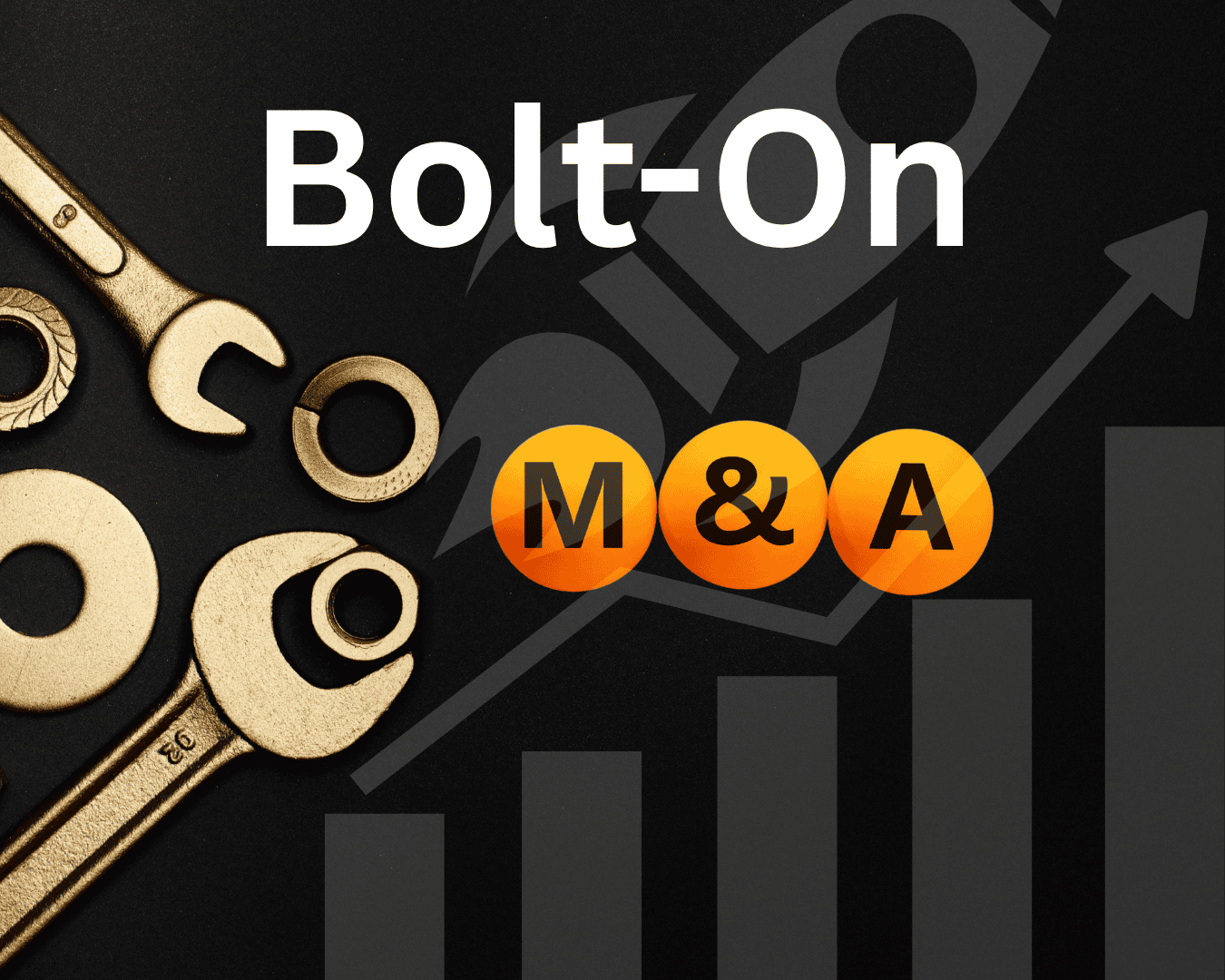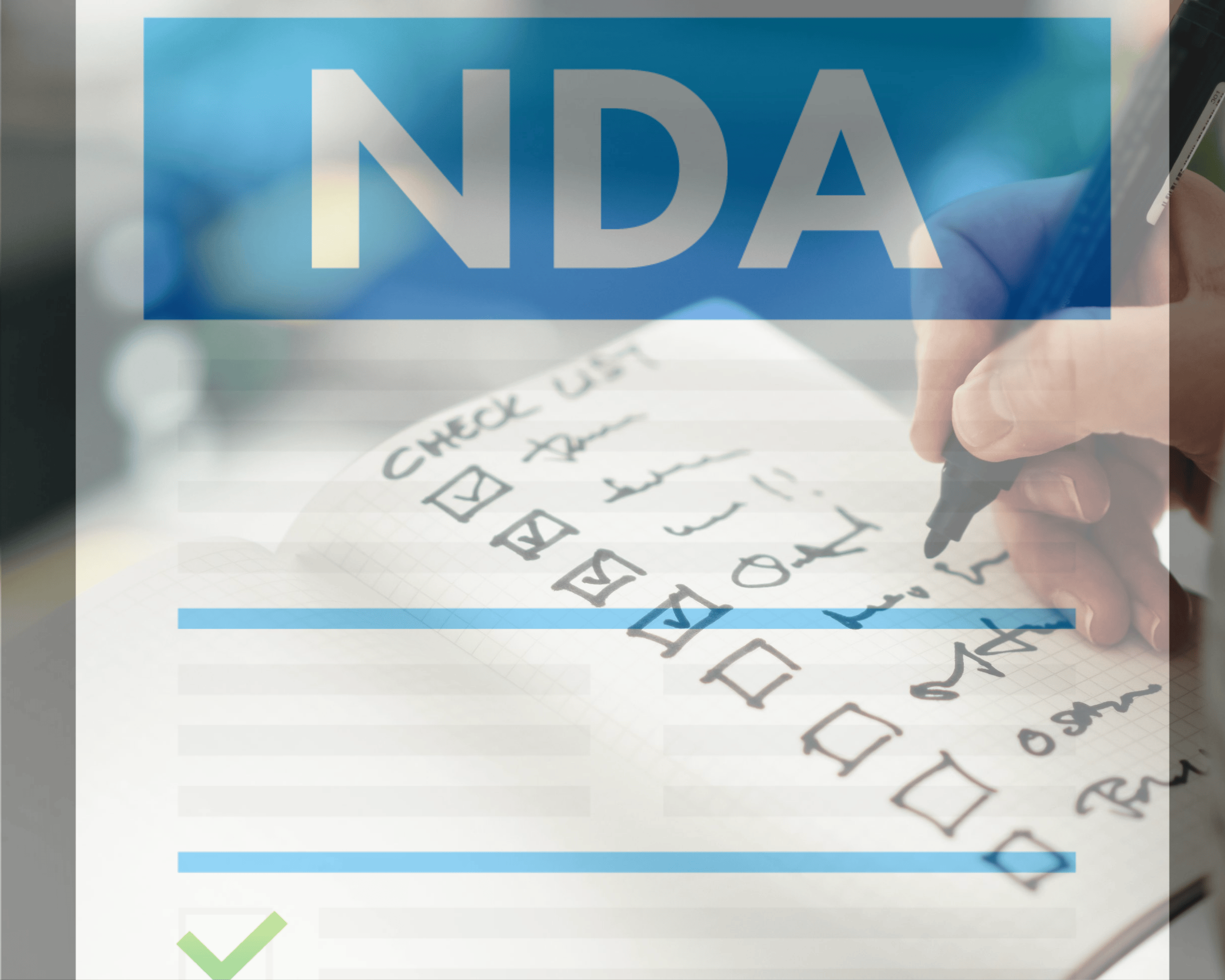M&A deals often fail - up to 90% miss their goals. Why? Common mistakes derail deals, leading to financial losses, legal risks, and operational chaos. Here's a quick breakdown of the seven most common errors and how to avoid them:
- Insufficient Due Diligence: Skipping thorough reviews leads to hidden debts, liabilities, and compatibility issues.
- Overpaying for the Target: Paying too much strains ROI and creates long-term debt.
- Overestimating Benefits: Unrealistic synergy projections set deals up for failure.
- Ignoring Integration: Poor planning disrupts operations, increases turnover, and reduces efficiency.
- Weak Stakeholder Communication: Lack of transparency erodes trust with employees, customers, and investors.
- Legal and Compliance Oversights: Missed liabilities, lawsuits, or regulatory issues cause costly setbacks.
- Lack of Leadership Accountability: Without clear oversight, post-merger goals often fall short.
Key Takeaway: Avoiding these mistakes requires thorough planning, disciplined valuations, clear communication, and strong leadership throughout the M&A process. Tools like AI-driven platforms can help streamline due diligence, integration, and compliance checks for better outcomes.
Avoiding the 9 Common Pitfalls of M&A
1. Insufficient Due Diligence
Rushing through due diligence or conducting it poorly is one of the leading reasons behind failed M&A transactions - accounting for over 50% of such failures. When buyers skip crucial investigative steps, they often uncover hidden liabilities or overpay for the acquisition, leading to costly integration challenges that could have been avoided with a more thorough process. These missteps not only inflate costs but also pave the way for operational hurdles.
Take the 2003 acquisition of Safeway by Morrisson's as an example. The company failed to account for key differences in customer demographics, resulting in significant integration issues and a loss of market share. This oversight cost the company millions in revenue and required years to recover from the miscalculated move.
Financial and Operational Implications
The financial repercussions of inadequate due diligence can escalate quickly. Hidden debts, poor cash flow management, and questionable accounting practices often surface after the deal is closed, leaving buyers to deal with unexpected financial instability.
"When acquiring an SMB, analyzing historical financial trends is essential to understanding the company's true health and sustainability. Multi-year patterns in revenue, profit margins, cash flow, and debt reveal whether performance is stable, improving, or deteriorating - helping buyers spot risks that single-year data can hide. Ignoring these trends can lead to overpaying for inflated earnings or missing red flags that threaten post-acquisition success."
Operationally, skipping a deep dive into the target company can lead to significant challenges. Buyers often discover, too late, that systems are incompatible, regulatory compliance is lacking, or internal cultures clash. These issues can disrupt business continuity for months and require costly remediation. Worse, relying solely on the target company’s data can create blind spots, as incomplete or biased information may only come to light after the deal is finalized.
Impact on Deal Success
The consequences of poor due diligence extend beyond immediate financial losses. Stakeholder relationships can sour, competitive advantages might erode, and growth opportunities could slip away. Cultural misalignment is another common issue, often leading to key employees leaving due to unresolved conflicts, which in turn reduces productivity post-merger. Additionally, emerging technology risks - like cybersecurity vulnerabilities or outdated software - can result in regulatory fines or operational disruptions that weren’t accounted for during the deal-making process.
Risk Mitigation Strategies
To avoid these pitfalls, buyers should analyze three to five years of detailed financial data. This helps uncover trends and anomalies, providing a clearer picture of whether the target company’s performance is sustainable or if recent gains are masking deeper issues. Engaging a multidisciplinary team of financial, legal, and operational experts ensures that all potential risks are thoroughly examined.
AI-driven platforms can also enhance the due diligence process. For example, Clearly Acquired’s platform offers tools like secure data rooms, automated NDAs, and expert advisory services, which help streamline document verification and identify potential risks. By adopting a disciplined approach to due diligence, buyers can lay the groundwork for a successful M&A transaction.
Leadership Considerations
Strong leadership is essential throughout the due diligence process. Active oversight helps uncover hidden risks and ensures a smooth post-merger transition. When executives are involved from the beginning, they can set clear expectations and make sure all critical areas are thoroughly reviewed. Regular meetings with the target company’s management can provide valuable insights that go beyond financial statements. Additionally, benchmarking against industry standards can help identify operational inefficiencies and gaps, giving acquirers a clearer roadmap for integration.
2. Paying Too Much for the Target Business
After addressing due diligence challenges, getting the valuation right is key to avoiding overpayment. According to DealRoom research, overpaying is the leading cause of M&A failures. Competitive bidding wars and overly optimistic projections often lead buyers to pay premiums so high that achieving expected returns becomes nearly impossible. This issue affects deals across the spectrum, from small businesses to massive corporate acquisitions.
History offers plenty of cautionary tales. Take the AOL-Time Warner merger in 2000: AOL’s $165 billion acquisition of Time Warner ended up erasing $99 billion in shareholder value. Another example is Kraft Heinz’s acquisition of Kraft Foods in 2015. The hefty premium paid led to a $15.4 billion write-down by 2019 when the anticipated synergies didn’t pan out.
Financial and Operational Impacts
Overpayment has far-reaching consequences. More than 70% of M&A deals involving inflated purchase prices fail to meet their ROI targets. The financial strain can disrupt post-merger cash flow, pile on debt, and push companies into aggressive cost-cutting measures like layoffs or reduced investment in growth. These actions don’t just hurt morale - they can also undermine the very strategy that justified the deal in the first place.
The pressure to meet inflated expectations often leads to unrealistic performance goals, which can erode company culture. This creates a domino effect of challenges that jeopardize the merger’s success.
Impact on Deal Success
Harvard Business Review estimates that 70–90% of M&A deals fail to achieve their intended objectives, with overpayment playing a significant role. Paying too much can unravel deals that might have succeeded under better terms. When returns fall short, stakeholder confidence takes a hit, and the acquiring company may struggle to remain competitive while managing excessive debt.
The fallout doesn’t stop there. To justify the high price, management might rush integration efforts or impose cost synergies that clash with the target company’s core strengths. Forced cultural changes or hasty decisions can erode the very value the acquisition was meant to add.
Strategies to Avoid Overpayment
Avoiding these pitfalls starts with setting - and sticking to - a firm price limit. Many sellers operate under the assumption that every company has a price, tempting buyers to pay excessive premiums. Disciplined buyers counter this by using clear valuation criteria based on objective analysis.
Independent third-party valuation experts can also be invaluable. They provide unbiased assessments, industry benchmarks, and data-driven insights that help buyers avoid emotional or speculative pricing. These experts can identify when asking prices exceed fair market value, giving buyers a solid foundation for negotiations.
"When acquiring an SMB, analyzing historical financial trends is essential to understanding the company's true health and sustainability. Multi-year patterns in revenue, profit margins, cash flow, and debt reveal whether performance is stable, improving, or deteriorating - helping buyers spot risks that single-year data can hide. Ignoring these trends can lead to overpaying for inflated earnings or missing red flags that threaten post-acquisition success." - Clearly Acquired
Platforms like Clearly Acquired offer tools, such as AI-driven valuation models and expert advisory services, to help buyers make informed decisions. These resources are particularly useful for identifying fair market values and steering clear of pricing traps common in Main Street and lower mid-market deals.
The Role of Leadership
Strong leadership plays a critical role in preventing overpayment. Leaders must set clear strategic goals, enforce disciplined valuation processes, and resist the urge to close deals at any cost. Establishing decision-making frameworks with multiple approval levels for price increases during negotiations can help maintain objectivity. Regular consultations with valuation experts and financial advisors also keep emotions in check when competitive pressure mounts.
Most importantly, leadership must have the discipline to walk away from deals that exceed predetermined price limits. Even if the target company appears highly attractive, sticking to these limits ensures that decisions align with long-term value rather than short-term impulses.
3. Overestimating Expected Benefits
Once a fair price is agreed upon, it’s crucial to set realistic expectations for the benefits of the deal. Overestimating expected benefits is a common and risky mistake in M&A, impacting everything from revenue synergies to cost savings and operational improvements. When projections don’t align with reality, even the most carefully structured deals can spiral into financial trouble. This misstep not only inflates costs but also disrupts integration efforts, creating a cascade of challenges.
According to research, 70–90% of M&A deals fail to meet their stated goals, with overly optimistic synergy projections often eroding shareholder value. Harvard Business Review highlights this as a widespread issue in how companies approach benefit estimation.
Financial and Operational Implications
Overestimating synergies can lead to wasted resources and operational upheaval. This often results in rushed integration decisions that undermine core business functions. The pressure to deliver on inflated promises compounds the problem, affecting multiple areas.
Revenue synergies, such as cross-selling or market expansion, are particularly prone to exaggeration. These benefits are typically harder to achieve than cost synergies, like eliminating redundancies. Yet, deal teams frequently base their projections on aggressive growth scenarios, ignoring market realities and customer behavior.
The operational fallout can be equally severe. Failed integration, productivity declines, and employee morale issues often follow when leadership fails to deliver on promises. This can lead to disengagement among employees - the very people needed to make the merger a success.
Impact on Deal Success
Inflated benefit projections don’t just lower returns - they can jeopardize the entire deal. Unrealistic expectations make it nearly impossible to achieve acceptable results. Worse, these inflated forecasts prevent companies from accurately measuring performance.
One major challenge is underestimating the complexity of achieving synergies, especially in areas like cultural and organizational integration. Combining sales teams, streamlining operations, or sharing technology platforms may seem straightforward in theory but often face unexpected hurdles that delay or derail progress. Addressing these challenges requires strong leadership and disciplined risk management.
Risk Mitigation Strategies
To avoid these pitfalls, companies need a disciplined and conservative approach to synergy modeling. Instead of relying on overly optimistic scenarios, successful acquirers use tools like scenario analysis and sensitivity testing to evaluate a range of possible outcomes. This involves stress-testing assumptions about cost savings, revenue growth, and operational improvements against industry benchmarks and historical trends.
Analyzing multi-year financial data is another critical step. Reviewing revenue, profit margins, cash flow, and debt over several years helps uncover risks that single-year snapshots might miss.
Incorporating third-party validation can also keep projections grounded. External advisors offer objective insights and help counter internal biases. Tools like Clearly Acquired provide AI-driven analysis and expert advice to validate assumptions, ensuring projections align with market realities.
Leadership Considerations
Strong leadership is key to managing expectations and avoiding financial strain during M&A. Leaders must prioritize realism and transparency, challenging overly optimistic assumptions and ensuring projections are backed by solid data. This includes involving functional leaders and integration teams early in the process to align benefit estimates with operational realities.
Accountability mechanisms are equally important. Leaders should define measurable post-merger goals and implement regular performance tracking to monitor progress. When targets aren’t met, having predefined corrective actions can prevent minor issues from escalating into major setbacks.
Effective leaders also stay alert for warning signs of inflated projections, such as reliance on overly aggressive synergy targets, lack of independent validation, minimal scenario testing, or rushed timelines. When these red flags appear, disciplined leaders take a step back, reassess assumptions, and bring in external experts to validate their plans.
4. Ignoring Company Integration
Company integration is a crucial phase in any M&A deal, yet it often gets sidelined. Many acquirers dedicate significant effort to due diligence and negotiations but fail to invest the same energy into combining the two organizations effectively. When integration planning is overlooked, it can jeopardize the entire deal.
Integration isn’t just about merging systems - it’s about creating a cohesive organization that aligns with the strategic goals of the acquisition. Neglecting this stage can lead to missed opportunities and unforeseen challenges, both financial and operational, as outlined below.
Financial and Operational Implications
The financial fallout of poor integration can be severe. Companies may find themselves dealing with redundant functions that inflate costs, losing revenue due to dissatisfied customers, or failing to achieve the cost savings that justified the merger. On the operational side, unclear responsibilities and disrupted workflows can hurt efficiency and productivity. Additionally, cultural clashes often lead to high turnover among key executives - studies suggest that up to 30% of executives leave within the first year following a merger, further destabilizing the organization.
Impact on Deal Success
When integration falters, the strategic goals of the deal can unravel. Companies risk losing market access, failing to leverage the combined strengths of the two organizations, and missing chances to enhance their competitive position. Customers may face service interruptions, suppliers might question their roles, and investors could lose confidence. These issues, compounded by missed financial targets and declining employee morale, can severely damage the deal’s long-term value.
Risk Mitigation Strategies
To preserve the value of the deal, integration must be treated as a strategic priority from the beginning - not an afterthought to be addressed post-closing. A comprehensive integration plan, developed well before the deal is finalized, is essential. This plan should tackle both the technical aspects of merging operations and the more nuanced challenges of blending two different corporate cultures.
Cultural alignment is particularly important. Early assessments of leadership styles and organizational values can help identify potential conflicts, allowing for proactive measures. Facilitating leadership discussions and joint training sessions can also ease cultural hurdles.
Clear communication is another cornerstone of successful integration. Regular updates about changes, along with timely responses to concerns, help maintain engagement and morale. Tools like employee sentiment surveys and open communication channels can alert management to brewing issues before they escalate.
Technology can also play a pivotal role in integration. Platforms like Clearly Acquired provide AI-powered tools, expert advisory services, and secure data rooms to streamline post-merger processes. These solutions can help businesses manage the complexities of integration more effectively.
Leadership Considerations
Strong leadership is essential to ensure smooth integration and overall deal success. Leaders must remain actively involved throughout the process. By establishing clear accountability and conducting regular progress reviews, they can keep integration efforts on track. Owners and executives should lead by example - articulating the vision, addressing challenges head-on, and staying engaged rather than leaving integration entirely to external advisors.
Creating cross-functional integration teams can help coordinate efforts and ensure focus on key objectives. Regularly reviewing milestones and tracking performance against set metrics allows leaders to identify and address issues early. Anticipating potential challenges - like key personnel departures, customer dissatisfaction, or operational disruptions - through contingency planning is critical for maintaining stability while working toward the strategic goals of the merger.
sbb-itb-a3ef7c1
5. Poor Communication with Stakeholders
Managing stakeholder communication is just as important as conducting thorough due diligence and setting realistic valuations when it comes to ensuring a merger's success. Unfortunately, communication often takes a backseat in M&A deals, even though it’s a key factor in determining whether the deal thrives or falls apart. When companies fail to keep employees, customers, suppliers, and investors informed, they risk creating confusion, resistance, and even derailing the entire transaction.
What does poor communication look like? It often involves inconsistent messaging, delayed updates, or incomplete information shared with key groups. These missteps can lead to an erosion of trust and confidence, which is detrimental to the deal. On the other hand, clear and timely communication can reinforce the groundwork laid by due diligence and valuation, paving the way for smoother integration.
Impact on Deal Success
The numbers tell a stark story: poor communication plays a major role in the 70%-90% failure rate of mergers and acquisitions. According to a Deloitte survey, 47% of executives cited poor communication as the top reason for unsuccessful integrations.
When stakeholders are left in the dark, they often fill the void with speculation and rumors. Employees may start looking for new jobs, customers might turn to competitors, and suppliers could question the stability of their contracts. This uncertainty triggers a chain reaction that can unravel even the most well-planned deals.
Consider the Daimler-Benz and Chrysler merger in 1998. A lack of clear communication and challenges in aligning company cultures led to significant talent loss and, eventually, the sale of Chrysler. It’s a cautionary tale of how poor communication can undermine even high-profile mergers.
Financial and Operational Implications
The fallout from poor communication isn’t just theoretical - it has real financial and operational consequences. High employee turnover, for instance, can be incredibly expensive, with replacement costs ranging from 50% to 200% of an employee's annual salary. When uncertainty about roles or the company’s future drives key team members to leave, the ripple effects are felt across the organization.
Customers may also feel the impact, experiencing service delays or disruptions if account managers leave or if systems integration falters. Suppliers, unsure about the continuity of their contracts, might delay shipments or demand new payment terms. These operational hiccups pile up, turning expected cost savings into overruns and projected revenue growth into losses. When teams are bogged down by confusion, even basic business operations can falter.
Risk Mitigation Strategies
The best way to avoid these pitfalls is by developing a comprehensive communication plan early in the M&A process. This plan should identify key stakeholder groups and address their specific concerns. For example, employees will want to know about job security, while customers will prioritize uninterrupted service.
Consistency is crucial. Whether through emails, town halls, or Q&A sessions, the core message should remain the same, tailored to fit the audience and delivered through the right channels. Timing is just as important as the message itself - companies should aim to communicate early and often, even if they don’t have all the answers yet. Acknowledging uncertainty while providing regular updates fosters more trust than silence followed by a sudden announcement.
Tools like Clearly Acquired can also help streamline communication. These platforms offer secure data rooms, automated NDAs, and centralized deal management hubs, making it easier to share accurate, up-to-date information with all parties involved. By reducing the risk of misunderstandings, these tools can keep the deal on track.
Leadership Considerations
Even with a solid communication plan in place, leadership plays a critical role in maintaining stakeholder trust. Leaders must be visible and accessible throughout the M&A process, whether it’s during town halls, customer meetings, or supplier discussions. Their presence signals a commitment to transparency and helps build confidence among stakeholders.
To ensure consistency, companies should appoint dedicated communication leads or teams. These specialists can manage messaging across different groups while keeping the narrative focused on the deal’s strategic goals and anticipated benefits.
Leaders should also create feedback channels to monitor stakeholder sentiment and address concerns proactively. Tools like pulse surveys, open office hours, and dedicated communication platforms allow leadership to identify potential issues early and resolve them before they escalate. By staying engaged and responsive, leaders can mitigate risks and help ensure the merger achieves its objectives.
6. Weak Legal and Compliance Review
Legal and compliance oversights in M&A transactions can be as risky as financial miscalculations. While buyers often zero in on financial performance and growth opportunities, they sometimes miss critical legal issues that rear their heads after the deal is closed. These can include pending lawsuits, unrecorded debts, environmental liabilities, or overlooked third-party consents - issues that, if ignored, can derail even the most carefully crafted M&A strategies.
This challenge is especially daunting in the U.S., where businesses must navigate a maze of federal, state, and local regulations. From antitrust laws to industry-specific compliance mandates, even experienced dealmakers can miss key legal details when due diligence is rushed.
Impact on Deal Success
The stakes are high. Harvard Business Review reports that 70% to 90% of M&A deals fail to meet their strategic goals, with legal and compliance missteps playing a significant role. A Deloitte survey echoes this, noting that over 40% of M&A professionals cite legal and regulatory issues as a top reason for deal failure or lost value.
Consider Verizon's acquisition of Yahoo in 2016. Two major data breaches, undisclosed during due diligence, led to a $350 million reduction in the purchase price and ongoing legal headaches. Similarly, AbbVie's $54 billion bid for Shire fell apart in 2014 due to changes in U.S. tax laws and regulatory hurdles, resulting in a $1.6 billion breakup fee and hefty legal expenses. These examples highlight how legal oversights can devastate deal economics - or even cause deals to collapse entirely.
Financial and Operational Implications
The financial fallout from poor legal reviews doesn’t stop at the initial purchase price. Buyers may face unforeseen costs like litigation, regulatory fines, tax penalties, or expensive remediation efforts that can far exceed their original investment. For instance, hidden environmental liabilities could require years of costly cleanup.
Operationally, the effects can be just as disruptive. Missed contractual details, such as change-of-control clauses, might lead to the automatic termination of key supplier agreements. Employment contracts could contain hidden obligations, like unexpected severance or retention payouts. Intellectual property disputes could stall product development or force costly licensing arrangements. These complications can ripple through supply chains, damage customer relationships, and divert leadership’s attention from integration and growth efforts. The stakes make proactive legal risk management not just important, but essential.
Risk Mitigation Strategies
The best way to avoid legal pitfalls is through thorough due diligence led by seasoned legal experts. This means carefully reviewing contracts, litigation histories, regulatory filings, and intellectual property portfolios. In the U.S., buyers must also confirm compliance with federal, state, and local laws, as well as industry-specific regulations in areas like healthcare, finance, and data privacy. For tech companies, cybersecurity and data privacy compliance are especially critical as regulatory scrutiny continues to grow.
Modern tools can make this process more efficient. Platforms like Clearly Acquired offer automated legal due diligence solutions, secure data rooms, and compliance verification systems to flag potential problems early. Post-merger audits are another smart move, as they can catch issues that were missed initially and allow for preemptive fixes.
Leadership Considerations
Strong leadership is vital for managing legal risks effectively. Executives need to allocate resources, set clear expectations, and work closely with legal teams throughout the process. Transparency is key - leaders should address legal concerns as they arise, rather than delaying action until the deal is near completion. By involving legal counsel from the earliest stages of deal evaluation, decision-makers can better gauge risks and, when necessary, have the resolve to walk away from deals that pose excessive liabilities.
7. Missing Leadership Accountability and Post-Merger Review
One of the most critical mistakes that can undermine an M&A deal happens after the paperwork is signed. It’s tempting for executives to ease off once the deal is closed, but this is precisely when leadership accountability and a structured post-merger review become essential. Without these, even the most carefully planned acquisitions can go off track. As discussed earlier, due diligence and integration are vital, but maintaining strong leadership after closing is what truly preserves and builds deal value.
In the U.S., there’s often a heavy focus on closing the deal, while the equally important task of managing integration takes a backseat. According to McKinsey, limited management involvement is a major factor behind the failure of 70% of M&A deals to meet expectations.
Impact on Deal Success
Research from Harvard Business Review reveals that 70–90% of M&A deals stumble due to weak post-merger integration and a lack of leadership accountability. Similarly, a Deloitte survey found that 47% of executives identified ineffective post-merger integration as the primary reason for deal failure.
Real-world examples highlight the consequences of poor leadership during integration. Operational disruptions caused by unclear leadership roles and responsibilities have led to multi-billion-dollar write-downs and significant losses in market value. These examples serve as cautionary tales for what can happen when leadership oversight is neglected.
Financial and Operational Implications
When leadership accountability is absent, financial and operational challenges quickly pile up. Companies may miss cost-saving opportunities, fall short on revenue targets, or face unexpected expenses due to poorly executed integration plans. Without regular reviews, these problems can grow unchecked, eventually becoming major crises.
On the operational side, a lack of clear direction leads to process breakdowns, duplicated efforts, and declining productivity. Employees often feel lost, and key talent may leave the organization, taking with them valuable institutional knowledge and customer relationships. For smaller companies with limited resources, leadership failures during integration can pose an existential threat.
Leadership Considerations
Just as integration planning and stakeholder communication are critical, so is having strong post-deal oversight to achieve strategic goals. This starts with appointing a dedicated integration leader or team tasked with full responsibility for post-merger outcomes. This isn’t a side project - it requires focused attention and the authority to make necessary changes. Measurable goals should be set from the outset, covering areas like synergy realization, employee retention, customer satisfaction, and operational efficiency. These goals should be monitored through regular check-ins and transparent reporting.
Bringing in external expertise can also be a game-changer during this phase. Tools and services like those offered by Clearly Acquired provide expert guidance, deal management support, and educational resources to help leaders navigate the complexities of integration and stay aligned with best practices.
Risk Mitigation Strategies
To ensure long-term success, establishing leadership accountability should be a priority from the start. This often involves creating a formal post-merger integration office or a steering committee with clearly defined roles and responsibilities. Setting up regular review cycles - at 30, 90, and 180 days post-close - keeps the process on track and allows for timely adjustments.
Performance tracking systems are another critical component. These systems monitor key metrics like synergy achievement, progress on integration milestones, employee retention rates, and financial performance compared to initial projections. Within 6 to 12 months of closing, a formal post-merger review should be conducted to evaluate what worked, what didn’t, and what lessons can be applied to future deals. Including key stakeholders in this review not only helps identify challenges and successes but also builds a knowledge base for future transactions.
The increasing emphasis on formalizing these processes highlights their value. By analyzing each deal - whether it succeeds or struggles - organizations can refine their integration strategies and improve outcomes in future mergers.
Risk and Mitigation Comparison Table
The seven oversight mistakes described earlier each come with their own set of risks, but there are proven ways to address them. To make things clearer, here’s a table that compares the risks and mitigation strategies side by side, along with timelines for implementation. This should help you spot potential issues early and take the right steps to resolve them.
| Oversight Mistake | Primary Risks | Key Mitigation Strategies | Implementation Timeline |
|---|---|---|---|
| Insufficient Due Diligence | Hidden debts, legal liabilities, operational inefficiencies | Multi-year financial analysis, forensic accounting, cross-functional review teams, AI-powered data rooms | 60-90 days pre-closing |
| Paying Too Much | Poor ROI, deal collapse, overpayment premiums averaging 30% above market value | Independent third-party valuations, strict price limits, conservative assumptions | Throughout the negotiation phase |
| Overestimating Benefits | Missed synergy targets, integration challenges, disappointed stakeholders | Conservative synergy estimates (reduce projections by 20-30%), involve functional leaders in planning | Pre-closing through Year 1 |
| Ignoring Integration | Cultural clashes, talent loss (up to 30% productivity decline), operational disruption | Cultural compatibility assessments, detailed integration roadmaps, dedicated integration teams | 30 days pre-closing through 18 months post-closing |
| Poor Stakeholder Communication | Employee resistance, customer defection, investor mistrust, morale issues | Transparent communication channels, regular updates, feedback mechanisms, stakeholder mapping | From announcement through 12 months post-closing |
| Weak Legal/Compliance Review | Pending litigation, compliance breaches, cybersecurity risks | Early legal due diligence, compliance audits, cybersecurity assessments, expert legal counsel | 90 days pre-closing |
| Missing Leadership Accountability | Unclear ownership, missed improvement opportunities | Assign dedicated integration leaders, establish KPIs, conduct formal post-merger reviews | From closing day through 24 months post-closing |
Different industries face unique challenges during mergers and acquisitions. For example, regulated sectors like healthcare and finance often encounter heightened legal and compliance risks, requiring more in-depth reviews and extended timelines. In technology deals, intellectual property protection and talent retention become critical, while manufacturing acquisitions demand thorough operational assessments and reviews for environmental compliance.
The financial risks tied to these mistakes are significant. For instance, inadequate due diligence contributes to nearly 50% of failed M&A transactions. Deals where overpayment premiums exceed 50% are twice as likely to underperform after the merger. Shockingly, only 25% of companies perform formal post-merger reviews to evaluate leadership accountability and integration success, missing key opportunities to improve.
Early warning signs, such as unclear documentation and inconsistent communication, can signal trouble ahead. Catching these issues early allows for precise interventions before they escalate into bigger problems.
Clearly Acquired simplifies risk management with tools designed to streamline the entire M&A lifecycle. Their AI-driven deal sourcing, automated due diligence tools, expert advisory services, and secure data management systems tackle risks at every stage - from initial screening to post-merger integration.
Conclusion
Navigating the complexities of mergers and acquisitions (M&A) requires sharp attention to detail and a proactive approach to managing risks. The seven common mistakes we’ve discussed - like skipping thorough due diligence, overpaying, overestimating synergies, neglecting integration, poor communication with stakeholders, weak legal oversight, and lack of leadership accountability - are key contributors to the 70% to 90% failure rate of M&A transactions. For smaller businesses, such as those on Main Street or in the lower mid-market, these missteps can have even harsher consequences due to fewer resources and narrower margins for error.
The good news? These pitfalls are avoidable. With disciplined planning and the right tools, companies can sidestep these challenges. Start by setting clear objectives, conducting comprehensive due diligence, maintaining open communication, and creating a solid integration plan. These steps can significantly improve the likelihood of a successful deal.
To further reduce risks, specialized platforms like Clearly Acquired's AI-driven investment banking solution provide invaluable support. From verified deal flow and automated due diligence tools to secure data rooms and expert advisory services, they simplify and streamline every stage of the transaction. By addressing fragmented processes, they help businesses avoid costly oversights and keep deals on track.
Ultimately, successful M&A isn’t just about finding the right opportunity - it’s about executing the process with precision. The tools and strategies to improve your success rate are within reach; the challenge lies in consistently applying them from the very start.
FAQs
What are the best ways to conduct thorough due diligence in M&A transactions?
Thorough due diligence is the backbone of any successful M&A transaction. To navigate this complex process effectively, it's essential to harness technology and rely on data-driven insights for a more precise and efficient analysis of the deal's critical elements.
By using platforms that bring together advisory services, funding solutions, and cutting-edge tools, you can simplify the process and dig into essential details like financial stability, potential legal challenges, and operational metrics. This method not only speeds up the workflow but also minimizes the risk of expensive errors or missed red flags.
How can businesses accurately evaluate and forecast synergies in a merger or acquisition?
To properly assess and predict synergies in mergers or acquisitions, businesses need to focus on data-driven analysis alongside thorough due diligence. These steps are essential for uncovering areas where cost savings, revenue growth, and operational improvements can be achieved.
Using advanced tools and technology can play a significant role in this process. Platforms that combine deal management, funding solutions, and advisory services allow companies to simplify evaluations and make smarter, well-informed decisions. This method not only ensures accurate projections but also helps reduce potential risks during every phase of the transaction.
How does leadership impact post-merger integration, and what steps ensure accountability?
Effective leadership plays a key role in navigating post-merger integration. It shapes the environment for teamwork, open communication, and alignment between teams. A strong leader not only defines a clear vision but also sets priorities and builds trust, which is critical during such a transitional phase.
To ensure accountability, it's important to assign clear responsibilities to team members, establish measurable goals, and consistently review progress. Using data-driven tools and technology can further enhance transparency and simplify decision-making, making the entire integration process more efficient.































.png)




























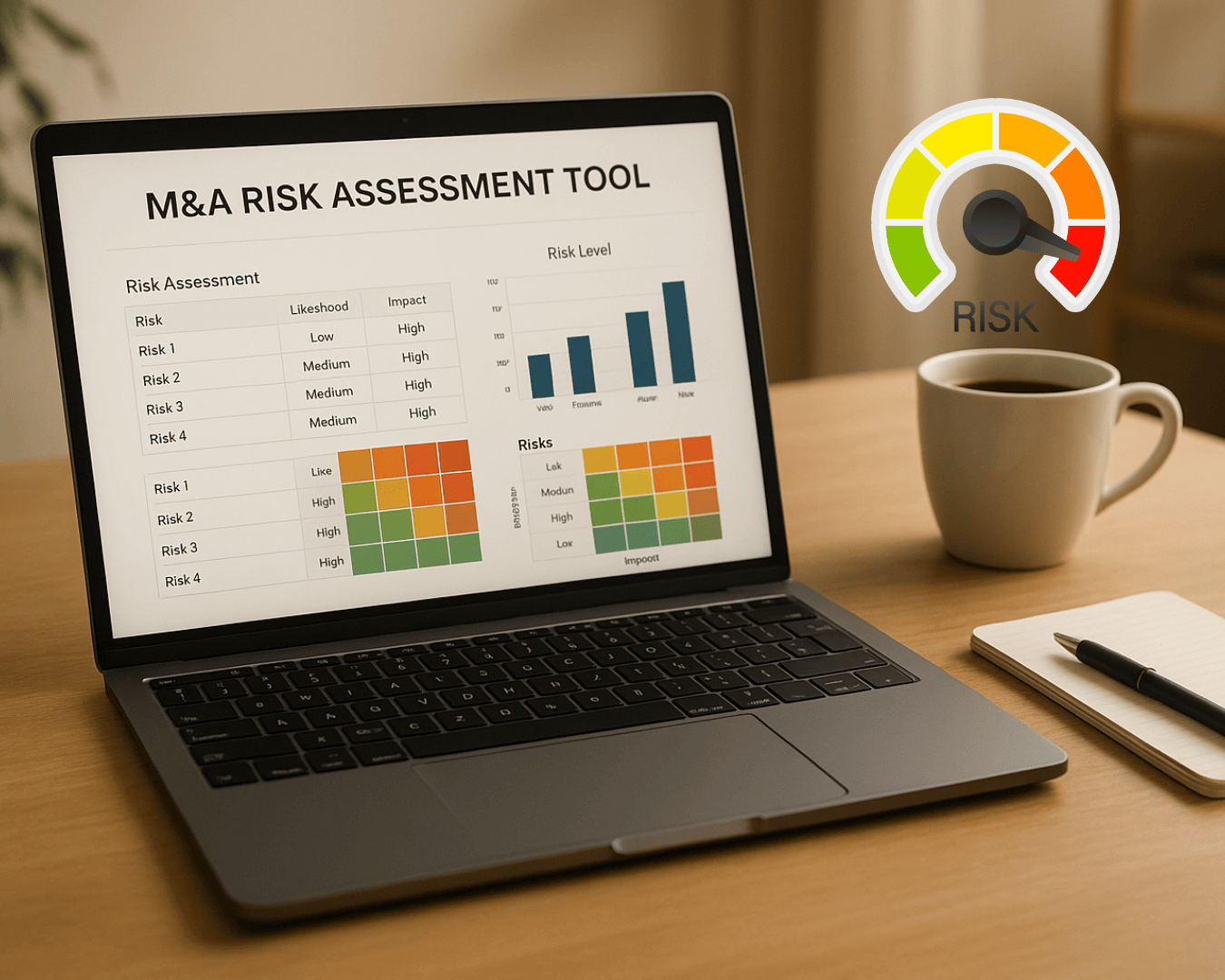











%20Loan%20Application%20Checklist.png)
